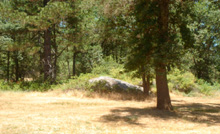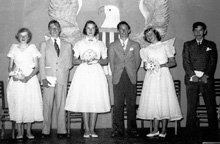
Our Elementary Schools |
||
|
Following the Class of 1957 50-year reunion in 2007, the reunion committee in conjunction with several members of the 1956-57 school newspaper staff produced a "post-graduate" edition of the Sluice. The essay below was included, and has been updated, expanded, and revised for presentation here. Comments and questions should be directed to Dick Estel. |
||
|
Introduction Mariposa County is a small community where everyone knows everyone else…but not quite. When we were in elementary school, most of us were not in touch with or aware of the kids at other primary schools scattered throughout the wilds of 1940s Mariposa County. Many of us went into town for 7th and 8th grade, and of course, we all got together when it was time for high school. Below, some of our classmates remember their early schools: Sebastopol (Bootjack) by Dick Estel with a lot
of help from Beverly Van Gundy Bowman I went to the Bootjack school, which was officially called Sebastopol. It was located about a half mile west of my house, which was on Pegleg Road just off the main road. It was probably a mile west of the Bootjack store, where Darrah Road meets present day Highway 49 South. I assume my mother walked me to school the first day; after that I walked by myself. It was uphill all the way, but of course, downhill all the way home. Over the years some of the classmates that accompanied me were Walter "Teed" Gann and his brother Amos, and a few others I can't recall. Later I was joined by Bob Butler, my next door neighbor to the east and my best friend, and then my sister, Linda, when she reached school age. At first we walked along the road, not a very dangerous activity in those days of minimal traffic, and much of the way there was a well-worn trail on the bank above the road. Eventually we followed a trail that ran parallel to the road about 200 yards to the south. It went into the woods at the edge of the school grounds, behind the houses occupied by our teacher, Marjorie Pinkston and her brother, Neil Northey, then down through a field directly toward our house. I don't recall walking in rain or snow, but since my mother didn't drive and my dad had taken the car to work well before time to leave for school, I assume we just put on rubber boots and raincoats and braved the weather, with no thought that there was any alternative. In 1945 the school was a nice stucco building with one large classroom, and Mrs. Pinkston taught all eight grades. She would have the older students help the younger ones while she taught other grades. I remember thinking that the first three grades were sort of like me, but the fourth graders were big, and impossibly advanced. School hours were 9:00 to 2:00 for the first three grades, while the older classes stayed till 4 p.m. There was no kindergarten in the rural schools in Mariposa in those days, but my mother had taught me to read and probably some other skills. Whatever they were, I did not make much use of them at first. The first day of school first graders were given a box of crayons and a sheet of paper with a square drawn on it. I colored the square green, but whether that color was chosen by the teacher or me, I can't recall. In any case, that was the only thing I did all day. In retrospect, my guess is that Mrs. Pinkston had a challenging task with so many grade levels, and chose to get the older kids started on work that they could continue on their own. The building had a stage, small kitchen area, and indoor bathrooms (something many families in the area did not have). During Christmas vacation of that first year the school burned down, and the woodshed was quickly remodeled for use. Beverly remembers seeing the glow of the fire from their home a mile or so on the other side of Bootjack. We were visiting friends on Triangle Road, and saw the fire across the valley, but didn’t know at the time what it was. Over the next few years, two other “temporary” classrooms, a step or two above the woodshed, were built, and as the student body expanded (early baby boomers?), more teachers were added. Besides Mrs. Pinkston, teachers through the years included Ada Stuart, Olivia Benjamin, Lecil Walker, Ilene Label, Nola Bonnell, Beverly Anderson, and Hazel Guilleman, who was my favorite and a legend in rural education in central California. I confess I can’t recall with certainty which ones I had, except for Stuart and Pinkston. We had a very active PTA, which introduced a hot soup program, where some of the mothers, including Blanche Van Gundy and Barbara Butler, among others, made a big pot of soup at home and brought it to the school for the students during the winter. Beverly especially remembers the cream of tomato soup, and for some reason I developed a lifelong aversion to potato soup. My sister says it was Chuck Butler who made the soup, while Mrs. B was at work. Each year we had Halloween and Christmas parties. Although they involved the school, I believe they were officially put on by “the community,” and took place at the old Bootjack Dance Hall, a marvelous building dating from 1894, with cracks between the unpainted wall boards, warped spots in the floors, and two ancient wood stoves that each warmed a ten foot radius, leaving the remaining 1500 or so square feet a few degrees above the outside temperatures. The steps and a low foundation wall of the original school building remained for many years, and once the debris from the fire was cleaned up, this became a croquet court; I remember playing many games there (it was one of the few level spots in all of Bootjack!) It was also used for dodge ball. The section of the road where the school stood still exists as Sebastopol Road, but the main route (Highway 49 South) runs north of the old alignment. On the lower end of the school property there was a pump house, which originally had a windmill. For a while during our early school years, the windmill lay on the ground, allowing opportunity for close study. Imagine the outcry if such a "dangerous" object were left lying on a school grounds today - plenty of places to get cut or injured in other ways. One time, probably when I was about ten, I was banished to the "cloak room" for some transgression. I believe the teacher was Mrs. Stuart, though I could be wrong there. There were a few pieces of scrap lumber in the small room, probably left from the days of hasty construction. I set to work building a fort, which was soon discovered. "Take that thing down!" exclaimed my tormentor. While I claim no engineering skills, I had constructed it in such a way that I had but to remove a single supporting board, and the entire structure crashed to the floor. Apparently gloating in this "triumph" has erased my memory of any further discipline that resulted. In the 1951-52 school year (7th grade), we became the first Bootjack class to attend Mariposa Elementary, so after walking the half mile or so to school for six years, I began six years of bus riding. Our teachers in Mariposa were Alice Ellingham (known as "Mrs. E"), also a legend in Mariposa County, and David Foster, possibly the nicest man who ever lived. I recently learned that Mrs. E taught in Bootjack in the late 1920s. At Mariposa Elementary we met the "town kids," as well as students who had attended other rural schools up to that point. My memory is not entirely reliable, but to the best of my recollection, the kids who started in first grade with me and went all the way to high school graduation were Ann Benjamin, Beverly Van Gundy, and Alfreda Wilson.
Yosemite Elementary School by Lee Nixon DeLaMare and Bill Cooper In the fall of 1945, with World War II just ending, a new first grade class began its work at Yosemite Elementary School. Three pupils, Lee Nixon, Tom Christensen and Bill Cooper, were to become half of the graduating class of 1953. They were joined during the first few years of school by Bill Tucker, Judy Sicher and Julie Williamson and later became the “Yosemite Six” part of the Mariposa High School Class of 1957. The schoolhouse in Yosemite stood in a meadow below Yosemite Falls. The original structure was built in 1918 and was wood shingled to blend with the Park Service homes in the area. It consisted of two large rooms, one housing 5th through 8th grades, and the other for 1st through 4th grades. The latter was divided into two rooms by a folding wall, and at one end was a stage which was the site of Christmas programs, musical performances, and our graduation. A flagpole flying the American and California State flags stood at the front of the school while on the east side of the building there were swing sets and an outdoor basketball court. The meadow on the back side of the school was not only the playing field but shared the site with two large victory gardens, maintained separately by Park Service and Yosemite Park & Curry Company families. The gardens were each surrounded by high chain link fences to keep foraging deer away from the lovingly tended crops. Lofting a baseball over one of these fences usually resulted in a home run, despite the frantic efforts of outfielders searching for the ball among rows of corn. Miss Annette Zaepffel taught the “Yosemite Six” in 1st and 2nd grades followed by Pauline Shorb, our teacher in 3rd through 5th grades, Virginia Clark in 6th grade and Lloyd Moore in 7th and 8th grades. School principals during those years were Mrs. Wilder, Mr. Williams and Mrs. Tipton. Each Christmas, 1st through 4th grade pupils wrote a letter to Santa Claus. The community gathered in the Camp Curry Dining Room on Christmas Eve where Santa arrived to grant each child’s Christmas gift request. It was a magical night. Older pupils participated in a Wednesday ski program in which they were bussed to the Badger Pass ski area and received weekly ski lessons from ski school pro Nic Fiore. In the upper grade levels, ballroom dancing was taught to anxious girls and fearful boys by Mrs. Womack in the “big room” of the school. There were wonderful Halloween parties at Sentinel Beach and class hayrides around the Valley. Every spring, the school adjourned for a picnic in one of the Valley campgrounds. There were organized “playdays” with competition in races and basketball throws. Our mothers made ribbons to award the winners and a good time was had by all. Who among us can forget the famous Flutophone band. Some enterprising salesman convinced a teacher who then convinced parents to purchase each student a Flutophone—a plastic flute that immediately became popular with aspiring band members, causing the Valley to resound with squeaks and squawks as the band rehearsed. In the fall of 1952, after seasons of discouraging results at the hands of the Mariposa Cougars, the Yosemite Badgers football team, under the direction of Coach Sterling Cramer, won a decisive 21-0 victory over Mariposa with Bill Cooper at quarterback and Bill Tucker and Tom Christensen in starring roles as fullback and halfback respectively. The “Yosemite Six” graduated on Monday, June 1, 1953 at the schoolhouse in an evening ceremony. Reverend Alfred Glass gave the invocation followed by the 6th through 8th grades chorus singing “America the Beautiful” under the direction of Mrs. Millie Anderson. Miss Barbara Jean Anderson played the processional, the recessional and accompanied the chorus on the piano. Superintendent of Schools Thomas Price presented diplomas to graduating class members. Our graduating class chose as a theme “How Our Government Affects Us,” with the introduction given by Tom Christensen. National government was discussed by Julie Williamson and Bill Tucker. Lee Nixon and Bill Cooper spoke about state government while presentations on county government and local government were given by Tom Christensen and Judy Sicher. It was thus that the “Yosemite Six” left the schoolhouse in Yosemite and began student life at Mariposa High, beginning each school day at 6 a.m. aboard Barney Johnson’s Bus No. 9 for a long trip down the Merced River canyon and up Briceburg grade to Mariposa. It was at Mariposa High that new friends became good friends and bonds were formed that have lasted us throughout our lives. We were so lucky! Lee and Bill would like to thank Linda Eads at Yosemite Research Library, Sally Abbott Uribe, Mike Abbott and Deanna Cramer Abbott for their memories of events and people during the Yosemite years.
Bear Creek School by Lucy Tiffany Zimmerman Here is a picture of the land where Bear Creek School used to be. Buck and I drove to the site in Midpines recently (in 2007), only to find our fantastic “big” rock covered with weeds and vines and looking so small. I went to Bear Creek from the 3rd grade on where I met and played with Lois and Charlene Bailey, Gail Tutsch, Gary Glodrey, Freddie Finch, Lyla and Jamie Curtis, Hughie Parker, Buck and Kay Zimmerman, Patsy Zimmerman, Dick Wagner, June Johnson and my sister, Judy. When I started at that school there were two buildings, a Quonset hut and an old one room building. The Quonset hut held the lower classes and the older building held the 4th, 5th and 6th grades (previously it had held all 8 grades). I remember games (Annie, Annie over) near that huge rock, having Mrs. Jessie Johnstone, Ms. Ayres, and Mrs. Durrant for teachers; having some hunter bring his dead mountain lion in the back of his pickup to show us and his dog full of porcupine quills; and the salamanders we could catch in the creek nearby. One memory is getting to walk home three long miles from school when the Mariposa buses couldn’t make it in the snow, which was more than one time. Now that was fun!!!!! Buck says he even got to ride his horse to school on occasion. Ask him about the time he and Freddie Finch started a fire in their pine needle fort. I didn’t have Ms. Ayres but I saw how strict she was. If a student wouldn’t mind, out would come her ruler, with a big whack on the knuckles. Going to such a small school during the late 40’s and early 50’s (now that I look back) was an experience that not many children can have now. I was fortunate to have such good friends then and all the way through high school in Mariposa. Such is life when the memories are so wonderful! (Another Bear Creek alumna, Lois Bailey Shafer, contributed the following additional information): School started each day with all of us (eight grades) standing around the flag pole watching the older boys raise the flag. Then we would put our little hands over our hearts and say the Pledge of Allegiance to the Flag of the United States of America, followed by repeating the Preamble to the Constitution, and then singing God Bless America. Wonder if we are the last generation to have been taught these values?
Mt. Bullion School (Princeton) by Dolly Thomas Kimbro During the rush for gold in the 1800s, many communities sprang up in the close proximity of a prosperous gold mine. That seems to be the explanation for Princeton CA, named after the very rich Princeton mine. Typically as these communities grew, the mining companies would build general stores, schools etc. to encourage new employees to come and to satisfy the existing ones. Over the years, many changes took place and some names were changed. By the 1940s the Princeton mine had long since closed down and the many thousands of inhabitants of the town had moved on to either another mine or hopefully something equally prosperous. What remained was the small town of Mt. Bullion with about 400 residents. The two room school house was the largest building in the community. By this time only one room was utilized for all or almost all eight grades. I started first grade there in 1946 at the age of 6. That first day I can still remember so vividly. We were given a brand new box of eight shiny, unbroken, sharp new Crayons all our very own! The first page in our work book was a picture of three balloons. The instructions were to color one red, one blue and one yellow. The sentences were simple but complete, teaching us to read and identify the colors with their name. Ahh, such mental stimulus. Mind you my next sibling in age was nine years older than I; I grew up on the side of a mountain with no neighbors and no playmates and listening to a battery operated radio, limited primarily to the news. School was awesome! Our seating arrangement was by grade. The first row was the first grade, the second row was the second grade, etc. The teacher taught the same subject to all of the classes at the same. She would walk back and forth in front of the classroom presenting the subject at the appropriate grade level to each row of students. When I started second grade, I craved harder work. My parents had taught me the basics before I started school. I knew my numbers and the alphabet. I could do some addition and subtraction (they played cards with me) and I could print. I was old for my age when I started. I turned seven two months after I started first grade. By now I was almost eight. I loved reading, I loved spelling, I loved words (obviously)! When it came time for the weekly spelling tests, I would have seven pieces of paper on my desk, representing second grade through eighth grade. I loved the challenge! The summer I finished second grade, my teacher Mrs. Daisy Thomas (I got her mail for years!), sent me home with several books and lessons. When I completed those, she had me come by her house in Mariposa and take a test. When I went back to school the third year in 1948, I felt so privileged. I was in the fourth grade! I was on track, correct age, correct grade. I was allowed to skip the third grade. Needless to say, I had to work for my grades after that. In 1949 and 1950, we got a new teacher, Mrs. Lois Zollars. Her three sons all attended and graduated from Mariposa High School. She was cool! She would join in and play games with us. Mrs. Thomas was considerably older. Mrs. Zollars was a "young" mom. They each were very good teachers. Two or three times a year we would have "music" day. There were two lovely and talented young ladies who would travel around to all of the rural schools and teach music. They were sisters, Rita and Rose Fraser. Rose married Norm Varney and taught regular classes at Woodland Elementary for many years. We used to play: Anti-over (we used the pump or well house), Run Fox Run, Dodge Ball, Hopscotch, Cowboys and Indians or Cops and Robbers. We jumped rope and played "dolls". We had one slide on the playground and one "monkey bars." It was a two inch pipe, four or five feet long and set in two twelve inch posts in the ground. We made paper boats and sailed them in the seasonal creeks. If it snowed, we brought as many sleds as we could and played on the hill behind the school. We'd pretend not to hear the whistle that the teacher blew letting us know it was time for class again. Two or three times a year, (holidays and special occasions) there would be a potluck at the school. The entire community was invited. The students would usually put on a play, recite and sing. It was a time to get to know and visit with your neighbors. The bachelors in the town really loved it, all that good home cooked food! This was done for Halloween and Christmas. There was some activity on Easter and May Day but usually not the whole community, just families. The last day of school we would all walk up the highway and down Old Toll Road to one particular house that had a pond and a large mowed yard. There we would all play baseball and have an awesome picnic lunch. Chucker Jay, who graduated with the class of '57, also went to school in Mt. Bullion. "Chucky," as we knew him then, was a playmate of mine from the time that we were age three. His paternal grandmother and my mother were good friends. His maternal grandmother assisted with the birth of my brother and oldest sister as midwife in 1923 and 1925. Beverly Noyes and family lived in Mt. Bullion for several years. I don't remember if she attended school there or we became acquainted at Mariposa Elementary School later. In 1950 Mariposa County consolidated the schools and began bussing most of the students to MES. It was sad. So many rural communities lost their solidarity, no longer having the local elementary school as the nucleus of their community. In my opinion this change has had an over all affect on the cohesiveness of the citizenry of our nation. Other Schools We've recently come across two documents with information on elementary schools in Mariposa County. The first is a page from the Historical Society bulletin, The Sentinel. It has a small quote on the status of schools in 1882, and includes photos of several of our schools. We put thumbnails of the full page plus the individual schools near the bottom of this page. Click here to see the page. The other resource is an article from the Mariposa Gazette, written by students at Woodland Elementary School a number of years ago. There is a brief paragraph on each of 15 schools; see it here.
Kindergarten in Mariposa Susan Beltrand Brochini: Woodland did not have kindergarten until fall 1975. I had to take my son to MES for kindergarten Sharon Appling-Ivanoff: Hornitos did not have kindergarten. Just 1-6 then bussed to Mariposa for 7-8. An hour and a half each way! Fran Appling Gardner: Mary and Jerry went to Bootjack School but when my turn came we had to go to Raymond instead and they did not have a kindergarten, at least in fall of 1956. I'm guessing Bootjack didn't either. Epilog by Dick Estel This is far from a comprehensive list of elementary schools that were operational during our primary years. In 1948, the year we advanced from third to fourth grade, the powers that be were planning the consolidation of all schools in the county into one district, plus the closing of some smaller schools, and bussing of 7th and 8th graders from other schools into Mariposa. The county Superintendent of Schools office provided us with a copy of a page from the planning document, which lists the following active schools: Bear Valley, Buck Meadows, Chowchilla, Colorado, Coulterville, Exchequer, Hornitos, Oak Grove, Princeton (Mt. Bullion), Quartzburg, Wawona, Bear Creek, Cathey's Valley, El Portal, Mt. Buckingham (Darrah), Sebastopol (Bootjack), Greeley Hill, Yosemite and Mariposa. Ben Hur was listed as active, with its two students sent under contract to Mariposa. Buck Meadows is shown as "joint with Tuolumne," but administered by Mariposa. Merced Falls is shown as "joint with Merced," administered by Merced. The following schools were listed as "suspended": Bagby, Bull Creek, Green Mountain, Granite Springs, Lewis, and Oakvale. There's a map showing the districts and their names, courtesy of Tom Phillips. A 1941 article from the Mariposa Gazette lists the enrollment for that year, with all of the suspended schools active at that time. In addition, schools active in 1941 but not listed in the 1948 document were Indian Peak and Pea Ridge. After our time, Sebastopol and Chowchilla were consolidated into a new school, known as Woodland, at Highway 49 South and Hirsch Road. Later a school opened at Lake Don Pedro. More recently schools at Greeley Hill and Cathey's Valley were closed but were replaced by charter schools. Today there are only five elementary schools operated by the county. But it must be remembered that most of these "old" schools opened before motorized transportation existed, so long commutes were not an option. |
||
|
Photos (Click to enlarge; pictures open in new window) |
||
|
||
 |
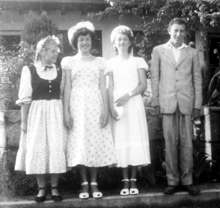 |
|
| The big rock and the Bear Creek school site | The Yosemite Six: Julie Williamson, Bill Cooper, Judy Sicher, Tom Christensen, Lee Nixon, Bill Tucker | Sebastopol Class of 1949: Mildred Mee, Yvonne Chambers, Carol Ballard, Paul Benjamin |
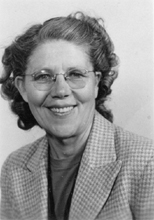 |
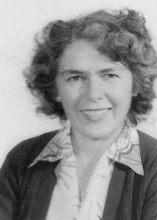 |
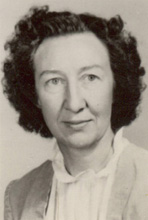 |
| Hazel Guilleman | Ilene Label | Olivia Benjamin |
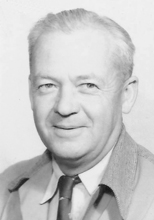 |
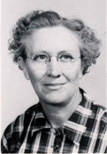 |
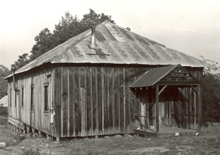 |
| David Foster | Nola Bonnell | Bootjack Hall |
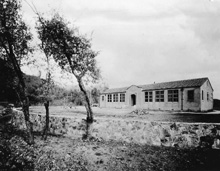 |
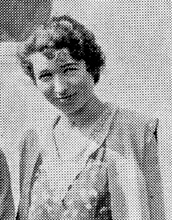 |
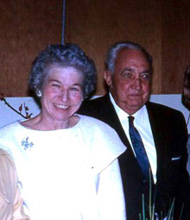 |
| Mariposa Elementary under construction | Alice Ellingham, from 1932 La Mariposa high school yearbook |
Alice and husband John (Chic) |
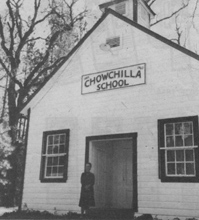 |
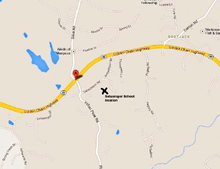 |
 |
| Teacher Jessie Elliott Hilton at Chowchilla School, date and source unknown |
Current day map showing Sebastopol School location | School enrollment, 1941 |
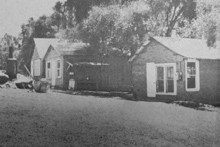 |
 |
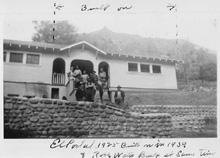 |
| Sebastopol School "temporary
buildings;" closest is the converted wood shed |
Sebastopol playground | El Portal School |
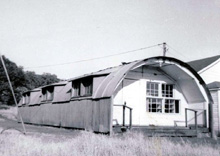 |
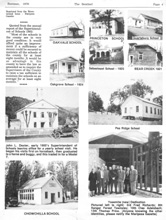 |
 |
| Quonset hut at Cathey's Valley School | Status report and photos of several elementary schools | Woodland students' article on elementary schools |
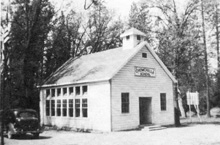 |
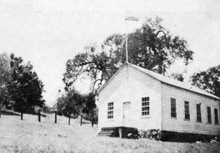 |
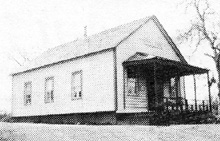 |
| Chowchilla School | Pea Ridge School | Oakvale School |
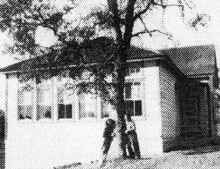 |
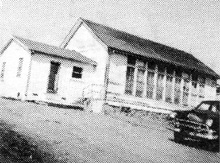 |
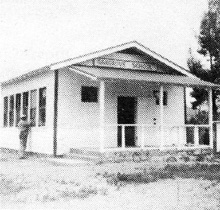 |
| Princeton School | Quartsburg School | Oak Grove School |
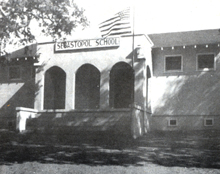 |
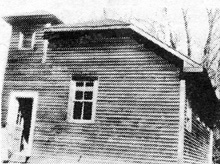 |
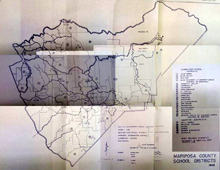 |
| Sebastopol School | Bear Creek School | Mariposa school
districts, 1948 (click here for a larger view of the district names) |
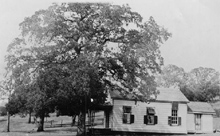 |
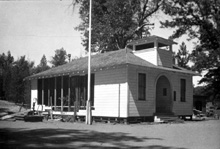 |
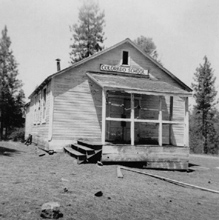 |
| Cathey's Valley School, 1904 | Greeley Hill School |
Colorado School (courtesy Teenie Matlock) |
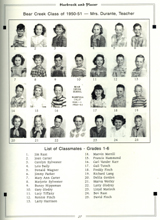 |
||
| Bear Creek
students 1950-51 (courtesy Carl VanderKarr) |
||
| Related Links | ||
| MCHS Alumni Association | Alumni on Facebook | Class of '57 Reunions |
| MCHS Graduates through 1938 | May 2013 Newsletter | Alumni Photo Gallery |
| MCHS Graduates after 1938 | Senior Dress-Up Day | MCHS |
| One More Sluice | Bootjack Hall | How I Got to Mariposa |
| The Flutophone | Email Us | History & Fate of Bootjack Hall |

